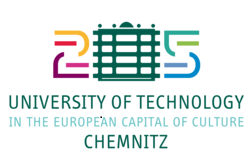The Perception of Intending Parents about the Common Antisocial Behaviors among Adolescent Students in Developing Countries
DOI:
https://doi.org/10.71514/jssal/2022.40Keywords:
Adolescent, antisocial, behaviors, parents, student.Abstract
This cross-sectional survey conducted in southwestern Nigeria examined the common antisocial activities among adolescents and students in developing countries, using a structured questionnaire among 300 people preparing to get married. The study was conducted from September to October 2019 with an aim to the perception of people intending to marry on eradicating students and adolescents’ antisocial behavior in developing countries. Data were analyzed with IBM-SPSS version-25. Promiscuity (41.7%) topped the list of antisocial activities mentioned, followed by indecent dressing and social nuisance (27.0%). Improper parental guidance ranked highest (41.3%) as the perceived cause of antisocial and high-risk behaviors, followed by peer pressure (29.3%). Around 48% of the respondents said the parents were to blame and 26.0% said adolescents, and 15.0% said the government was to blame. Antisocial behaviors can be reduced among students and adolescents by including parenting and moral training in the education curriculum. Also, there is a need to educate parents on the essential parenting tips and methods.
Downloads
References
Sen Akcay, Z. & Senemoglu, N. (2021). Prediction of Physics Lesson Learning Level by Students’ Characteristics and Teaching-Learning Process. International Journal of Education in Mathematics, Science, and Technology (IJEMST), 9(4), 625-654. https://doi.org/10.46328/ijemst.1754
Alemika, E. E. O., & Chukwuma, I. C. (2011). Juvenile justice administration in nigeria: Philosophy and practice. Centre for Law Enforcement Education.
Alink, L. R. A., & Egeland, B. (2013). The Roles of Antisocial History and Emerging Adulthood Developmental Adaption in Predicting Adult Antisocial Behavior. Aggressive Behavior, 39(2), 131–140. https://doi.org/10.1002/ab.21464.
Amos, P. M. (2013). Parenting and culture–Evidence from some African communities. In Parenting in South American and African contexts. IntechOpen.
Antolín, L., Oliva, A., & Arranz, E. (2009). Contexto familiar y conducta antisocial infantil. Anuario de psicología, 40(3), 313-327.
Bank, L., Patterson, G. R., & Reid, J. B. (1987). Delinquency Prevention Through Training Parents in Family Management. The Behavior Analyst, 10(1), 75–82. https://doi.org/10.1007/bf03392409.
Baumrind, D. (1978). Parental disciplinary patterns and social competence in children. Youth & Society, 9(3), 239–267. https://doi.org/10.1177/0044118X7800900302.
Bowker, J. C., Rubin, K. H., & Coplan, R. J. (2016). Social withdrawal. Encyclopedia of adolescence, 1-14.
Braga, T., Gonçalves, L. C., Basto-Pereira, M., & Maia, Â. (2017). Unraveling the link between maltreatment and juvenile antisocial behavior: A meta-analysis of prospective longitudinal studies. Aggression and Violent Behavior, 33, 37–50. https://doi.org/10.1016/j.avb.2017.01.006.
Cabrera, F. J., Herrera, A. D. R. C., Rubalcava, S. J., & Martínez, K. I. (2017). Behavior patterns of antisocial teenagers interacting with parents and peers: a longitudinal study. Frontiers in psychology, 8, 757. https://doi.org/10.3389/fpsyg.2017.00757.
Çelik, S., Diken, İ. H., Çolak, A., Arıkan, A., Aksoy, F., & Tomris, G. (2016). Effectiveness of the preschool version of the first step to success early intervention program for preventing antisocial behaviors. Kuram ve Uygulamada Egitim Bilimleri, 16(2), 511–536. https://doi.org/10.12738/estp.2016.2.0317.
Collins, W. A. (1997). Relationships and development during adolescence: Interpersonal adaptation to individual change. Personal Relationships, 4(1), 1-14. https://doi.org/10.1111/j.1475-6811.1997.tb00126.x.
Defitrika, F., & Mahmudah, F. N. (2021). Development of life skills education as character building. International Journal of Educational Management and Innovation, 2(1), 116-135.
Del Valle, N. Q., Velázquez, J. A. V., García, F. J., López, M. D. L. G., Buenabad, N. G. A., & Icaza, M. E. M. M. (2007). La familia y el maltrato como factores de riesgo de conducta antisocial. Salud Mental, 30(4), 47–54.
Dogan, S. J., Conger, R. D., Jeong, K., & Masyn, K. E. (2018). Cognitive and Parenting Pathways in the Transmission of Antisocial Behavior from Parents to Adolescents Author ( s ): Shannon J . Dogan , Rand D . Conger , Kee Jeong Kim and Katherine E . Masyn Published by : Wiley on behalf of the Society for Research in. Society for Research in Child Development, 78(1), 335–349.
Eddy, J. M., & Reid, J. B. (2003). The adolescent children of incarcerated parents: A developmental perspective. Prisoners once removed: The impact of incarceration and reentry on children, families, and communities, 233-258.
Ettekal, I., & Ladd, G. W. (2015). Developmental Pathways From Childhood Aggression-Disruptiveness, Chronic Peer Rejection, and Deviant Friendships to Early-Adolescent Rule Breaking. Child Development, 86(2), 614–631. https://doi.org/10.1111/cdev.12321.
Garaigordobil, M., & Martínez-Valderrey, V. (2014). Effect of Cyberprogram 2.0 on Reducing Victimization and Improving Social Competence in Adolescence//Efecto del Cyberprogram 2.0 sobre la reducción de la victimización y la mejora de la competencia social en la adolescencia. Revista de Psicodidáctica, 19(2).
Garaigordobil, M., & Maganto, C. (2016). Conducta antisocial en adolescentes y jóvenes: prevalencia en el País Vasco y diferencias en función de variables socio-demográficas. Acción Psicológica, 13(2), 57–68. https://doi.org/10.5944/ap.13.2.17826.
Hirschi, T. (1969). Causes of delinquency. Berkeley: University of California Press.
Human-Hendricks, A. R., & Roman, N. V. (2014). What is the link between antisocial behavior of adolescents and parenting: Asystematic review of parental practices to manage antisocial behavior. Journal of Communications Research, 6(4), 439-464.
Jalling, C., Bodin, M., Romelsjö, A., Källmén, H., Durbeej, N., & Tengström, A. (2016). Parent Programs for Reducing Adolescent’s Antisocial Behavior and Substance Use: A Randomized Controlled Trial. Journal of Child and Family Studies, 25(3), 811–826. https://doi.org/10.1007/s10826-015-0263-y.
Leslie, K. (1995). Methods for design effects. Journal of Official Statistics, 11(1), 55.
Li, M., Chen, J., Li, X., & Deater-Deckard, K. (2015). Moderation of harsh parenting on genetic and environmental contributions to child and adolescent deviant peer affiliation: A longitudinal twin study. Journal of Youth and Adolescence, 44(7), 1396-1412.
Newman, P.R, Newman, B. . (1976). “Early adolescence and its conflict: Group Identity versus alienation”, Adolescence.
Nuhu, F. T., & Nuhu, S. T. (2010). Opinions and attitudes of some parents in Ilorin, north-central Nigeria, towards child abuse and neglect. South African Journal of Psychiatry, 16(1), 27-32.
Obando, D., Trujillo, A., & Trujillo, C. A. (2014). Substance use and antisocial behavior in adolescents: The role of family and peer-individual risk and protective factors. Substance Use and Misuse, 49(14), 1934–1944. https://doi.org/10.3109/10826084.2014.956365.
Ogwuche, C. H., Vincent, I., & Chiahemba, M. D. (2018). Influence of Parental Support and Monitoring on Antisocial Behaviour among Secondary School Students. Journal of Education and Entrepreneurship, 5(1), 1–10. https://doi.org/10.26762/jee.2018.40000007.
Patterson, G. R., & Oregon, E. (1982). A social learning approach, Volume 3: Coercive family process.
Pears, K. C., Kim, H. K., & Fisher, P. A. (2016). Decreasing risk factors for later alcohol use and antisocial behaviors in children in foster care by increasing early promotive factors. Children and Youth Services Review, 65, 156–165. https://doi.org/10.1016/j.childyouth.2016.04.005.
Rhee, S. H., Friedman, N. P., Boeldt, D. L., Corley, R. P., Hewitt, J. K., Knafo, A., Lahey, B. B., Robinson, J., Van Hulle, C. A., Waldman, I. D., Young, S. E., & Zahn-Waxler, C. (2013). Early concern and disregard for others as predictors of antisocial behavior. Journal of Child Psychology and Psychiatry and Allied Disciplines, 54(2), 157–166. https://doi.org/10.1111/j.1469-7610.2012.02574.x.
Rovis, D., Bezinovic, P., & Basic, J. (2015). Interactions of School Bonding, Disturbed Family Relationships, and Risk Behaviors Among Adolescents. Journal of School Health, 85(10), 671–679. https://doi.org/10.1111/josh.12296.
Sheldon, M. L. (2015). Linking marital and parenting quality in parents of early adolescents. Utah State University.
Smith, J. D., Dishion, T. J., Shaw, D. S., Wilson, M. N., Winter, C. C., & Patterson, G. R. (2014). Coercive family process and early-onset conduct problems from age 2 to school entry. Development and psychopathology, 26(4pt1), 917-932.
Stevens, M. (2018). Preventing at-risk children from developing antisocial and criminal behaviour: A longitudinal study examining the role of parenting, community and societal factors in middle childhood. BMC Psychology, 6(1), 1–12. https://doi.org/10.1186/s40359-018-0254-z.
Torry, Z. D., & Billick, S. B. (2011). Implications of antisocial parents. Psychiatric Quarterly, 82(4), 275–285. https://doi.org/10.1007/s11126-011-9169-z.
Waller, R., Hyde, L. W., Klump, K. L., & Burt, S. A. (2018). Parenting Is an Environmental Predictor of Callous-Unemotional Traits and Aggression: A Monozygotic Twin Differences Study. Journal of the American Academy of Child and Adolescent Psychiatry, 57(12), 955–963. https://doi.org/10.1016/j.jaac.2018.07.882.
Ward, H., Brown, R., & Hyde-Dryden, G. (2014). Assessing Parental Capacity to Change when Children are on the Edge of Care: an overview of current research evidence. Loughborough University. https://dspace.lboro.ac.uk/dspace-jspui/handle/2134/18183.
Downloads
Published
How to Cite
Issue
Section
License
Copyright (c) 2022 Michael Ovire Avwerhota, Oluwasola Stephen Ayosanmi, Uduak Bassey, Olubunmi Elizabeth Amoo, Ahmed Mamuda Bello, Titilope Temitayo Ayosanmi, Adebanke Adetutu Ogun, Isioma Umeadi Ezeagu, Abiodun Olaiya Paul, Felix Olaniyi Sanni

This work is licensed under a Creative Commons Attribution-NonCommercial 4.0 International License.
The work is made available under the terms of the Public Offer and the Creative Commons Attribution 4.0 International License (CC BY 4.0). This license allows anyone to reproduce, distribute, and adapt the material in any medium or format, including for commercial purposes, provided that proper credit is given to the creator(s) and the original source.












